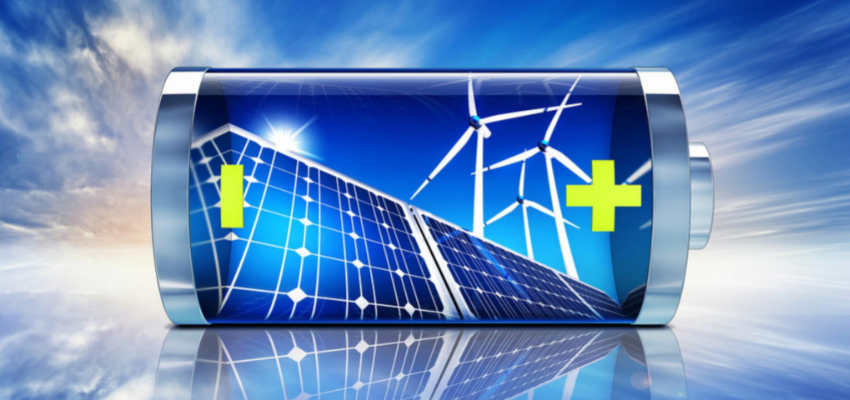Show:
Exploring Key Technologies Behind Renewable Energy Systems
Renewable energy is transforming how we power our world, reducing dependence on non-renewable sources and curbing environmental impacts. According to recent forecasts, the global renewable power capacity is set to increase significantly, projecting a shift in the energy landscape where renewables could surpass coal as the primary source of electricity by 2025. This growth is pivotal as we approach a future where sustainable power solutions are not just preferable but essential. The urgency of meeting global climate goals demands not only innovative technology but also a coordinated effort across industries, governments, and consumers. Let’s delve into the technologies making this transition possible.

The Role of Essential Components
Robust renewable energy systems rely heavily on a few critical elements which are fundamental in controlling energy flow, maintaining stability, and providing essential energy storage capacities required by these systems.
Modern energy technologies depend on a synergy of innovative materials and precise engineering, with capacitors taking on a central role in delivering consistent performance. They smooth out the outputs of energy and maintain the balance needed to manage the sporadic nature of renewable sources like solar and wind.
In vast wind and solar operations, capacitors ensure steady power delivery, mitigating voltage fluctuations that could harm equipment or interrupt service. Their use across consumer electronics and extensive energy projects underlines their adaptability and pivotal importance in pushing forward renewable technologies. Furthermore, the increasing demand for capacitors calls for resilient supply chains and high-quality manufacturing processes to match the pace of the renewable energy sector’s growth.
Solar Power Technologies
Solar power has undergone substantial enhancements, notably in the efficiency of photovoltaic cells and the development of materials for solar panels. Dual-sided sunlight capture by bifacial solar panels and cost-effective thin-film technological applications have improved efficiency and lowered solar setup costs.
The emergence of perovskite solar cells, which promise superior efficiencies at reduced costs, positions them as transformative for the sector. These enhancements, coupled with broad industry progress, have led to a steep 90% drop in solar photovoltaic costs over the past decade.
Such a marked decrease has rendered solar power a formidable competitor to conventional energy sources and facilitated its widespread adoption. Additionally, the integration of automated production lines and sophisticated recycling processes is optimizing manufacturing and mitigating solar panel waste concerns.
Wind Energy Innovations
Wind energy innovations are producing significant benefits, particularly with turbine technology advances. Modern turbines are not only larger and more robust but are also more energy-efficient, generating more power with less wind.
The rapid advancement of offshore wind technologies, including floating turbines that can operate in deep waters once considered unsuitable for operation, marks an impressive industry development. These improvements, which involve enhanced blade design materials and aerodynamic modeling, have significantly increased wind energy capture efficiency while simultaneously decreasing the cost per kilowatt-hour of electricity generated from wind energy.
Furthermore, predictive maintenance technologies using AI/IoT sensors have proven essential in increasing turbine reliability, decreasing downtime, and cutting operational costs.

Energy Storage Solutions
Renewable energy sources present significant variability that necessitates reliable power supply through robust energy storage solutions. Recent advances in battery technologies such as lithium-ion, solid-state, and flow batteries have resulted in higher energy densities, longer lifespans, and faster charging capabilities than ever before.
Flow batteries have quickly become popular for grid-scale applications, as their ability to separate power and energy capacities offers enhanced flexibility. Technological advancements are critical in managing the fluctuations of renewable energy, making it a more stable and reliable resource for national grids. Furthermore, green hydrogen storage developments are creating long-term energy storage that allows energy savings for months across various sectors and uses.
Grid Integration Systems
The incorporation of renewable energy into current grid frameworks demands sophisticated smart grid technologies. These systems employ advanced metering infrastructures, real-time data monitoring, and energy management systems to elevate electricity distribution efficiency. Microgrids, operating either independently or alongside broader grid networks, are increasingly crucial in decentralizing power and bolstering outage resilience. Enhancements in these interactions between renewable resources and traditional grids facilitate a smoother transition to renewable alternatives.
Furthermore, high-voltage direct current (HVDC) systems are revolutionizing long-distance energy transmission, minimizing losses and seamlessly connecting remote renewable energy sites to metropolitan centers.
Hydro and Marine Power Advances
Advancements in hydroelectric and marine energy technologies are boosting the efficiency and practicality of these energy sources. Innovations in turbine designs and material improvements have propelled the performance and viability of both tidal and wave energy, expanding their utility and integration into existing energy systems. Innovations like variable-speed hydropower turbines are optimizing output by adjusting to fluctuating water flow conditions.
These technologies harness natural water movements, providing consistent and predictable power, which is a significant advantage over other more variable renewable sources. In addition, marine power projects are starting to leverage modular designs, which simplify installation and maintenance, further reducing costs.
Conclusion
The ongoing advancements in renewable energy technologies are rapidly changing our energy landscape. Each innovation brings us closer to a sustainable and resilient energy future. Harnessing these technologies effectively will ensure that renewable energy is not only a part of our energy solution but a cornerstone of global energy consumption. With continued investment in innovation and supportive policies, renewable energy systems will lead the way toward achieving energy security and climate goals.

 Return to Previous Page
Return to Previous Page








